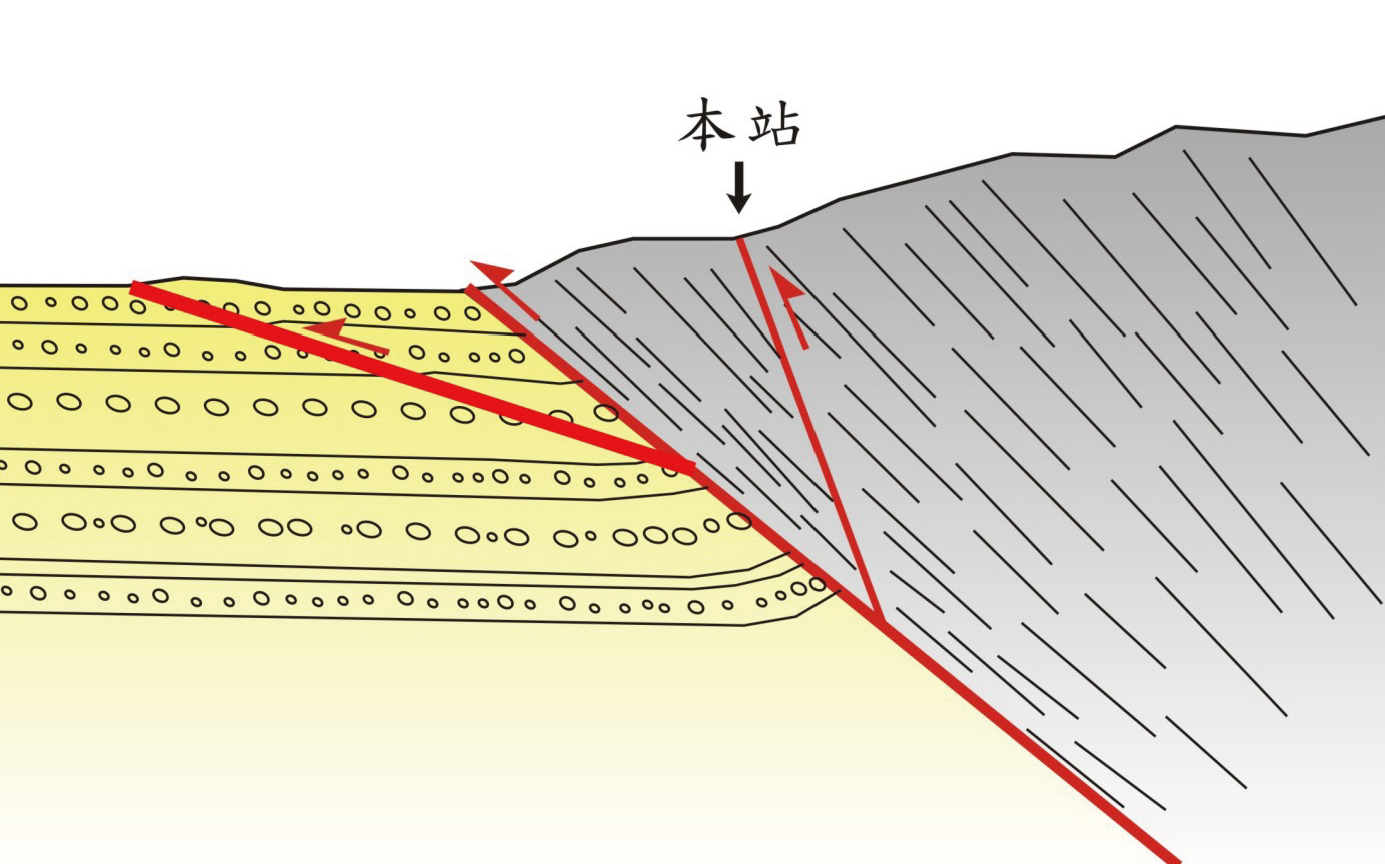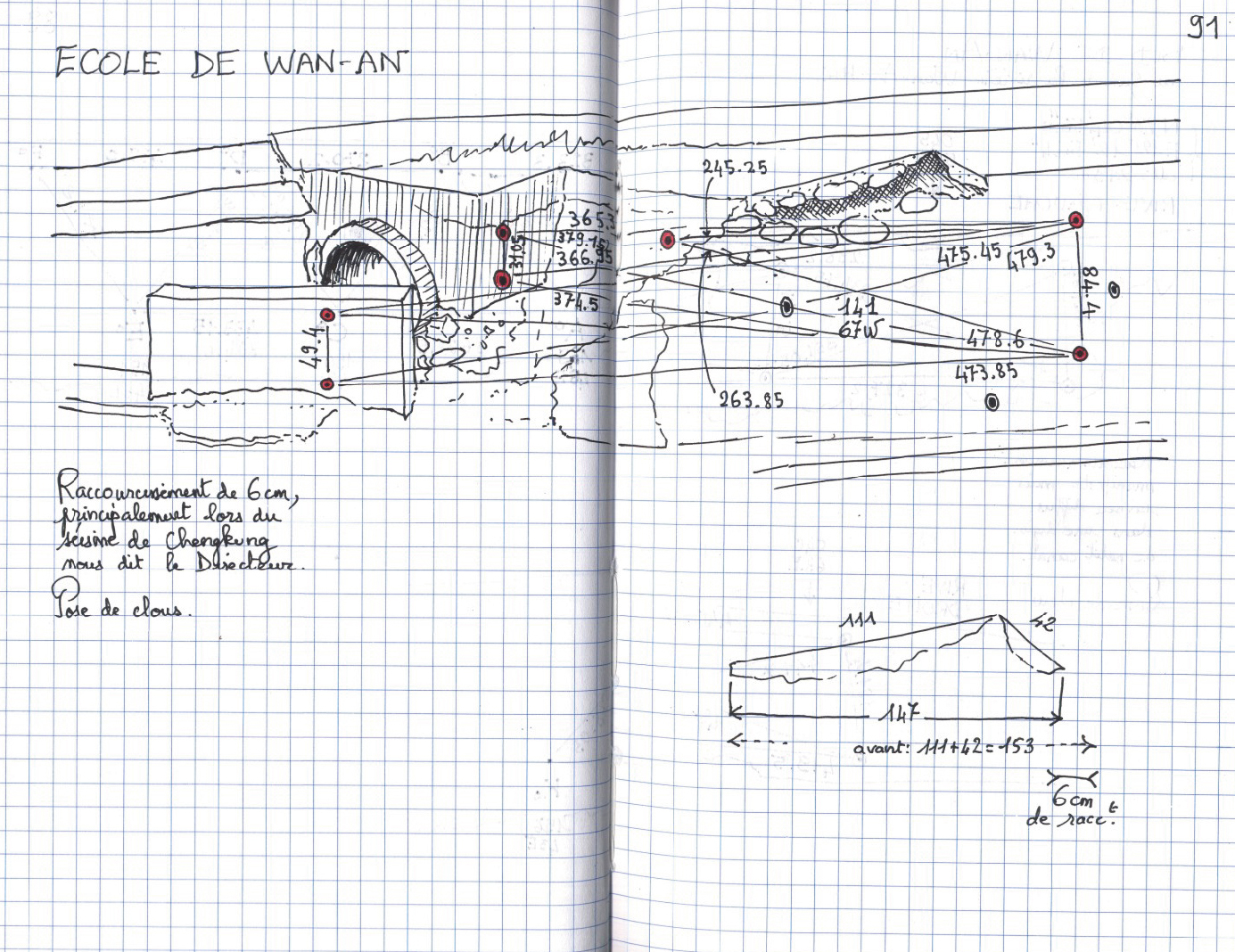|
九大景點
池上斷層在近地表常分支發展成一至三條主要的斷層帶。從各種地質證據來看,一般認為池上斷層至少在數萬年前就已經發展成今天的大致面貌。然而斷層上盤的快速抬升及下盤的快速沈積,加上兩萬年前的冰河期影響,有些次要的分支斷層,由於滑移速率較慢,容易受到地表營力作用影響,使得地表斷層帶被覆蓋,或是斷層崖被磨蝕了。現今主要的地形崖,大多反應了末次冰期(一萬年前)以來斷層滑移最活躍的分支斷層之地表出露位置。 本站所觀察到的地表建物破裂,應該是一條次要的分支斷層,主要分支斷層在更西側的主要地形崖附近。從此破裂點持續的量測紀錄來看,平均擠壓縮短速率為每年一公分,或更小;比其他附近地點顯示之每年二至三公分少了許多。 On-site Experiments in Fault ZoneThe Chihshang Fault often exhibits a few surface strands instead of one single fault in the near surface level. It is believed, based on several pieces of geological evidence, that the Coastal Range begun to collide against the Longitudinal Valley along the Chihshang Fault since at least tens of thousands of yearsago. Combining effects of vigorous uplift in the hanging wall and rapid sedimentation in the footwall, in addition to strong erosion during the last glacier age, the strands with lesser slip rate usually were buried by Holocene deposits with subtler fault scarps. In contrast, the present major geomorphic scarps usually represent the major strands with more important slip rate since the Holocene time. At this site, the fractures on the human construction would correspond to a minor branch of the Chihshang Fault. The major strand should be further closer to the major geomorphic scarp to the west. The repeating measurements on the fractures indicate a shortening rate of about 1 cm/yr, which obviously is much less than the total rate of 2-3 cm/yr across the fault. 跨斷層地質剖面示意圖Schematic geological cross section
斷層破裂位移量測Measurements on fractures on wall
|


